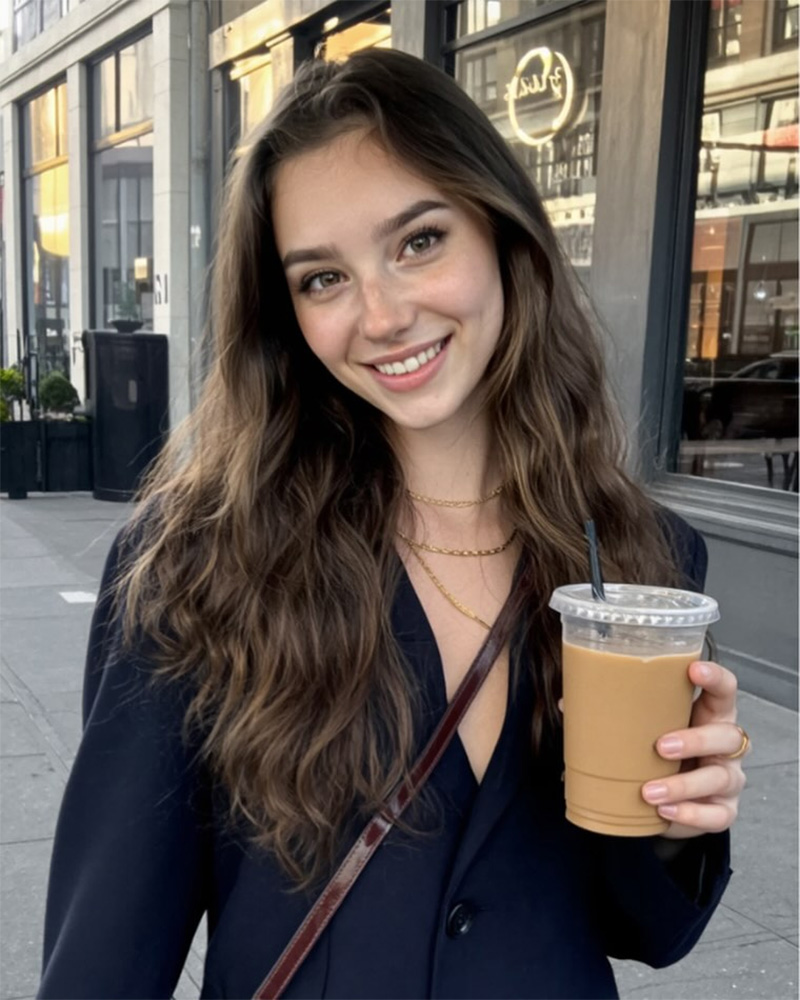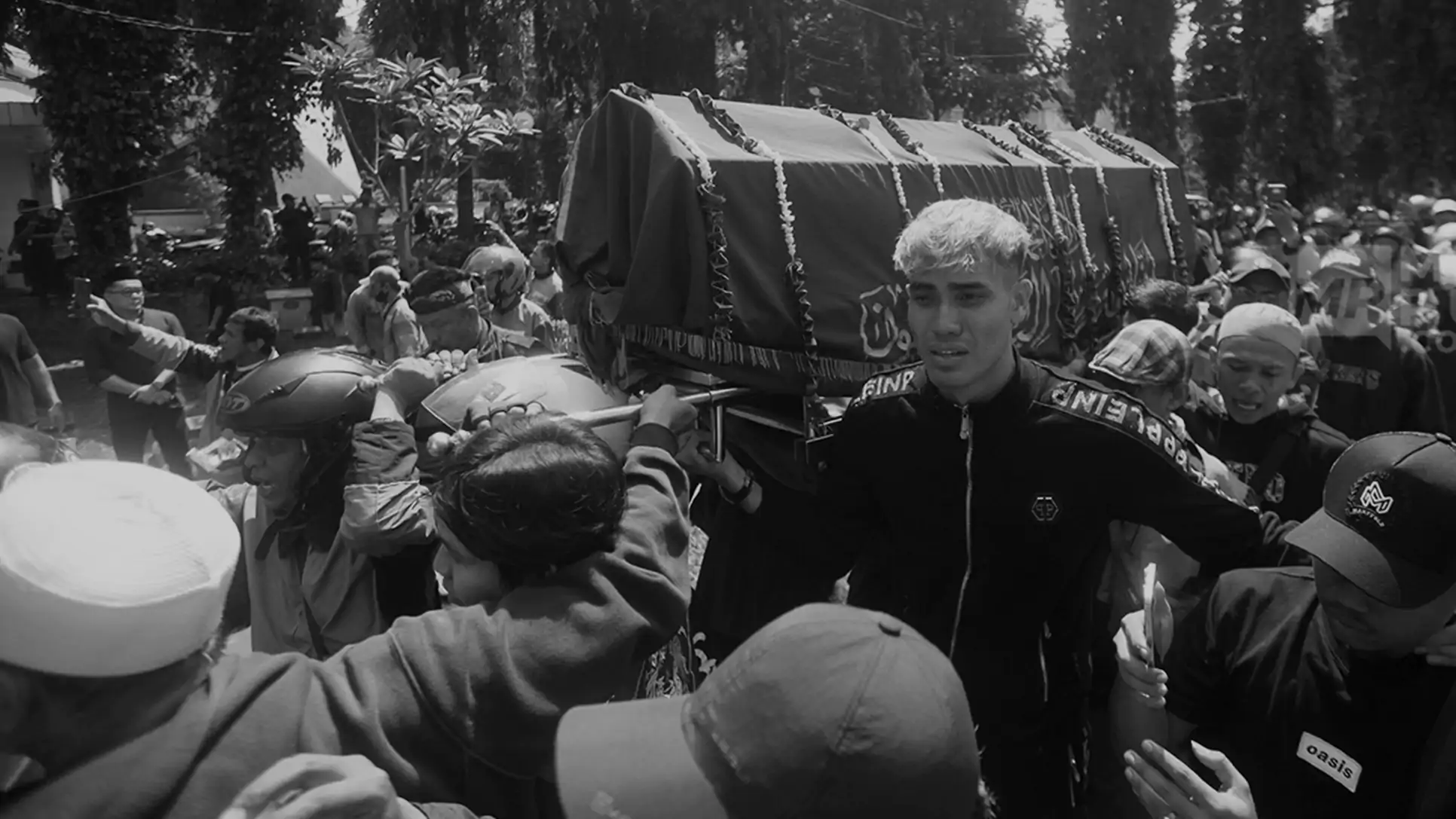Tilly Norwood made her debut in the most Gen-Z way possible: through a series of photogenic posts on social media, flaunting a visage and physique that could easily land her modeling contracts or a role in a Hollywood film.
With her long brunette hair, hazelnut eyes and gorgeous smile, to many, she's perfection.
When it might seems like they're seeing a new star, the next "girl" for the entertainment industry, they were wrong.
This is because Tilly is not human.
She is literally created by bits and bytes, live in the pixels she is created in.
Tilly is an AI, born born from the imaginations and code of the studio Xicoia, a creation of Eline Van der Velden’s parent entity Particle6. When Deadline ran the headline “Talent Agents Circle AI Actress Tilly Norwood As Studios Quietly Embrace AI Technology,” it jolted the industry. Real actors and directors were swift to push back.
This "actress" is not what she’s being sold as.

Tilly Norwood was introduced to showcase what AI can do, intended to be a lighthearted remark.
"When we first launched Tilly, people were like, ‘What’s that?’" she said. "And now we’re going to be announcing which agency is going to be representing her in the next few months."
an der Velden said talent agents had expressed interest in signing Norwood, boasting that an announcement would be made soon about which agency would represent her.
But it didn't take long until Tilly became the center of a cultural flashpoint.
The impression of having this "girl" made a lot of real actors and actresses, as well as directors and producers to push back, pointing out that Tilly Norwood is no actress at all, and that she is an artificial creation, a digital being born from an algorithm rather than a human soul, and does not belong, and can never enter the industry.
Many of them erupted in outrage.
Mara Wilson, best known for Matilda and Mrs. Doubtfire, accused Van der Velden and her team of theft. “Shame on these people,” Wilson said on Instagram. “They have stolen the faces of hundreds of young women to make this AI ‘actress.’ They’re not creators. They’re identity thieves. What about the hundreds of living young women whose faces were composited together to make her? You couldn’t hire any of them?”
Director Reed Morano, known for The Handmaid’s Tale and I Think We’re Alone Now, condemned the move even more bluntly.
“I guess if you can’t make it as an actor yourself...and you’re incredibly lazy, you can cheat your way in!” she wrote, addressing Van der Velden directly. “An AI actor has no life experience, and no amount of clever prompts can replicate the effect of true humanity and soul. Thank you for your hollow and empty gift to feed the greedy.”
She warned studios not to fall for “snake oil,” saying they would lose audiences if they tried to replace genuine performers with synthetic ones.
Director Joe Carnahan, known for The A-Team and The Grey, added that he hopes “Tilly’s career tanks.” Actor Lukas Gage joined in the mockery.
“She was a nightmare to work with! She couldn’t hit her mark and she was late!” Their sarcasm underscored a deeper anxiety.
To them, Tilly represents a future where real human talent is devalued in favor of digital convenience.
Van der Velden responded through Tilly’s official Instagram:
She is not a replacement for a human being, but a creative work — a piece of art. Like many forms of art before her, she sparks conversation, and that in itself shows the power of creativity.
I see AI not as a replacement for people, but as a new tool — a new paintbrush. Just as animation, puppetry, or CGI opened fresh possibilities without taking away from live acting, AI offers another way to imagine and build stories. I’m an actor myself, and nothing — certainly not an AI character — can take away the craft or joy of human performance.
Creating Tilly has been, for me, an act of imagination and craftsmanship, not unlike drawing a character, writing a role, or shaping a performance. It takes time, skill, and iteration to bring such a character to life. She represents experimentation, not substitution. Much of my work has always been about holding up a mirror to society through satire, and this is no different.
I also believe AI characters should be judged as part of their own genre, on their own merits, rather than compared directly with human actors. Each form of art has its place, and each can be valued for what it uniquely brings.
I hope we can welcome AI as part of the wider artistic family: one more way to express ourselves, alongside theatre, film, painting, music, and countless others. When we celebrate all forms of creativity, we open doors to new voices, new stories, and new ways of connecting with each other.
But her artistic defense didn’t silence the backlash.
Oscar-nominated actress Abigail Breslin joined the chorus, calling on her peers to boycott the entire idea. “I beg every actor I know to please boycott this,” she wrote. “If your agency is trying to sign an AI actor, you should leave them. It’s such a f--- you to the entire craft. Also... not for nothing but it’s a ‘female AI actress,’ so basically just another way for men to control and narrate the female experience. This is f---ed. #CancelTillyNorwood.”
Soon after, the Screen Actors Guild-American Federation of Television and Radio Artists (SAG-AFTRA) released a formal statement condemning the development.
“SAG-AFTRA believes creativity is, and should remain, human-centered,” the statement read.
“The union is opposed to the replacement of human performers by synthetics.
To be clear, ‘Tilly Norwood’ is not an actor; it’s a character generated by a computer program that was trained on the work of countless professional performers — without permission or compensation.”
The union further warned that using synthetic performers without bargaining and consent would violate existing labor agreements.
The controversy surrounding Tilly Norwood has become a flashpoint for the broader cultural anxiety about artificial intelligence in the creative industries.
On one hand, her creator frames her as a modern art form — a new creative medium that could expand storytelling. On the other hand, artists and unions view her as a threat to livelihoods, a symbol of how corporations might exploit technology to bypass human labor, artistry, and emotion.
In other words, Tilly Norwood's newly found fame in the evolving film and media ecosystem is considered a provocation, if not a stress test.
She challenges the assumptions about who can perform, what a performance is, and who owns the boundaries of identity.
If AI “actors” become normalized, what becomes of the actor’s craft, their rights, their ability to earn a living? How do we protect consent, personality rights, and authenticity?
Even if Tilly never stars in a blockbuster, she’s already altered the conversation.
She forces us to confront the possibility that the next wave of “talent” may not breathe, may never age, and may be infinitely reproducible. And it asks us: if stories are our humanity’s mirror, how dangerously skewed will they be when the mirror is synthetic?
The debate isn’t merely about Tilly’s face or her digital performances; it’s about the soul of storytelling itself.
Acting, after all, is about channeling lived experience — joy, grief, fear, love — and transforming it into something that resonates with other people. No dataset can replicate that kind of raw, imperfect humanity. Yet, the allure of AI “actors” remains strong for studios eager to cut costs, skip contracts, and avoid scandals.
Tilly Norwood’s emergence is both a technological milestone and a cultural warning shot.
She embodies the intersection of innovation and unease, the boundary where artistry and automation blur.
Whether she becomes a passing novelty or a permanent fixture in entertainment, her debut forces us to ask uncomfortable questions: In the age of AI, who owns creativity? What makes a performer real? And how much humanity are we willing to trade for the illusion of perfection?
